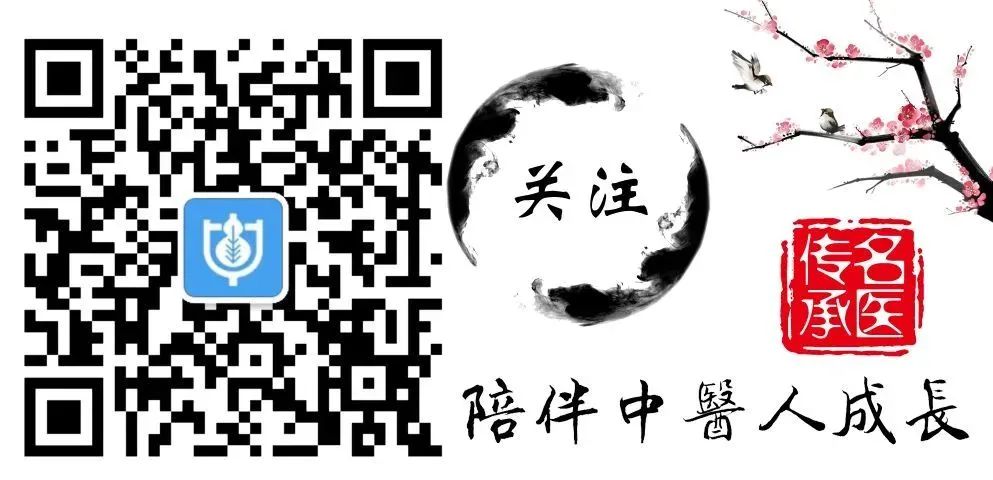Click the blue text above to follow us!

When it comes to olfactory and auditory diagnosis, we are not unfamiliar with it. When friends and family meet and greet, if the other person speaks with a heavy and muffled voice, “as if coming from a jar,” we usually ask with concern: “Have you caught a cold?” This is actually using olfactory and auditory diagnosis to assess illness.
Olfactory and auditory diagnosis refers to the method by which TCM practitioners diagnose diseases through listening to sounds and smelling odors. Listening includes assessing the patient’s breathing, speech, coughing, heart sounds, vomiting, belching, sighing, sneezing, yawning, and bowel sounds. Smelling includes detecting abnormal odors emitted by the body, excretions, and the environment of the sickroom.
Understanding the Source Through Sound
The Nanjing states: “To know by hearing is called sage.” As one of the four diagnostic methods in TCM, olfactory and auditory diagnosis holds a special position and role in TCM diagnosis. Since the Qin and Han dynasties, there have been records regarding olfactory and auditory diagnosis in the Huangdi Neijing. The Shuowen Jiezi states: “To hear is to know. It comes from the ear and the sound.” This indicates that the concept of “hearing” was initially limited to auditory perception. The Nanjing explains “to know by hearing” as “to hear the five sounds to distinguish the disease,” which confirms this point. Although some passages in the Nanjing recorded that smelling odors could diagnose diseases, it did not include olfactory diagnosis as part of the method at that time. The Ming dynasty’s Yixue Yanyue explicitly proposed the term “olfactory and auditory diagnosis,” but it was still limited to auditory diagnosis. It was not until the mid-Qing dynasty that the Chongqing Tang Suibi clearly stated that olfactory and auditory diagnosis includes both auditory and olfactory aspects, believing that “although the character for ‘hear’ comes from the ear, the hearing in the four examinations is not solely focused on sound… All five senses should be used when entering the sickroom,” a principle that continues to this day.
Diagnosing and Understanding the Principles
“External signs reflect internal conditions” is one of the principles of TCM diagnosis. TCM believes that “what is within must manifest externally,” indicating that internal organ dysfunction will reflect outwardly, and olfactory and auditory diagnosis fully embodies this principle.
Olfactory and auditory diagnosis includes both hearing and smelling, and changes in sound and odor can reflect internal organ diseases to some extent. Therefore, by listening to sounds and smelling odors, one can infer the location and nature of the disease. The Huangdi Neijing associates the five sounds (角, 徵, 宫, 商, 羽) and the five voices (呼, 笑, 歌, 哭, 呻) with the five organs (liver, heart, spleen, lung, kidney), indicating that sounds can reflect the activities of internal organs.
The Nanjing states: “How do we know it is caused by summer heat? It is indicated by a foul odor. How do we say this? The heart governs foul odors; if it enters the heart, it becomes a scorched odor; if it enters the spleen, it becomes a fragrant odor; if it enters the liver, it becomes a rancid odor; if it enters the kidney, it becomes a putrid odor; if it enters the lung, it becomes a fishy odor. Therefore, we know that heart disease caused by summer heat is indicated by a foul odor.” This shows that at that time, changes in odors were already considered an important indicator for diagnosing summer heat.
Listening to Sounds to Identify Illness
Sounds produced by a person in a normal physiological state are called “normal sounds,” characterized by natural vocalization, harmonious tone, clear speech, and responsive communication. Due to differences in gender, age, and constitution, each person’s voice is unique; men often have deep and muffled voices, while women tend to have high and clear voices. The production of sound is closely related to the lungs, heart, and kidneys, primarily completed through the activity of qi, coordinated by various organs such as the throat, epiglottis, teeth, tongue, lips, and nose. By listening to the patient’s speech, snoring, moaning, calling, yawning, and sighing, as well as any abnormal changes in language, doctors can assess the cold-heat and deficiency-excess patterns and the patient’s mental state. Generally, if the patient speaks in a high and powerful voice, continuously and energetically, it indicates an excess pattern, heat pattern, or yang pattern; if the voice is low, weak, and intermittent, it indicates a deficiency pattern, cold pattern, or yin pattern.
Taking a common ailment—coughing—as an example: if the cough is dry and non-productive, it often indicates dryness-heat or fire-heat cough; if the cough is hoarse, dry, and produces little phlegm, accompanied by tidal fever and dry throat, it often indicates lung yin deficiency; if the cough is tight and muffled with abundant white phlegm that is easy to expectorate, it often indicates a cold cough, damp cough, or phlegm-damp; if the cough is forceful with yellow and sticky phlegm, it often indicates an external wind-heat invasion; if the phlegm is white, clear, and watery, it often indicates an external wind-cold; if the cough is weak and low, accompanied by shortness of breath and spontaneous sweating, it indicates lung qi deficiency. Additionally, if the cough is paroxysmal, continuous, and ends with a sound resembling a bird call, it is called “dund cough,” also known as “whooping cough,” commonly seen in children, often indicating lung excess; if the cough sounds like a dog barking, accompanied by a white membrane that is difficult to remove from the throat, it is called “diphtheria,” often indicating lung and kidney yin deficiency.
Distinguishing Illness by Smell
In clinical olfactory diagnosis, the odors primarily include the abnormal smells from the body and the environment of the sickroom.
Body odors include halitosis and sweat odor. Generally, a person’s mouth does not have a special odor; if halitosis occurs, it is often related to stomach heat, food stagnation, poor oral hygiene, or indigestion. For example, if there is a sour odor in the mouth, accompanied by poor appetite, it indicates food stagnation in the stomach; if there is a foul odor, it often indicates stomach heat; if there is a putrid odor, it often indicates internal ulcers or sores.
The odors in the sickroom primarily come from the patient’s secretions or excretions. If the patient coughs up turbid phlegm or pus with a foul odor, it often indicates lung abscess; if the urine or menstrual discharge has a foul odor, it often indicates a heat pattern, while a fishy odor often indicates a cold pattern; if the sickroom has a putrid or cadaveric odor, it indicates severe internal organ failure and critical condition. Additionally, some specific odors should also be taken seriously; an ammonia smell is often seen in patients with late-stage edema, while a rotten apple smell is often seen in diabetes.
By listening to sounds and smelling odors, one can discern the location of the disease, demonstrating the effectiveness of olfactory and auditory diagnosis. Although olfactory and auditory diagnosis plays an important role in determining the location, nature, and prognosis of diseases, the formation and development of diseases is a complex process, and clinical manifestations can vary widely. Relying solely on this single diagnostic method may contradict the holistic view of TCM and could lead to inaccurate differentiation. Therefore, to thoroughly understand the patient’s condition and ensure the accuracy and comprehensiveness of the data, it is essential to combine all diagnostic methods, ensuring that observation includes listening, listening includes questioning, and questioning includes palpation. Only by truly integrating the four examinations and comprehensively assessing the patient’s condition can a correct diagnosis be made.
Note: Please follow medical advice for specific treatment and medication!
Copyright Statement:
-
This article is adapted from: China Traditional Chinese Medicine News, Authors: Chai Chao, Li Ting, Liang Yonglin
-
Copyright belongs to the relevant rights holders. If there are any improper uses, please feel free to contact us.
-
This public account shares articles and videos for learning, communication, and reference. Non-TCM professionals should not attempt to self-medicate.


